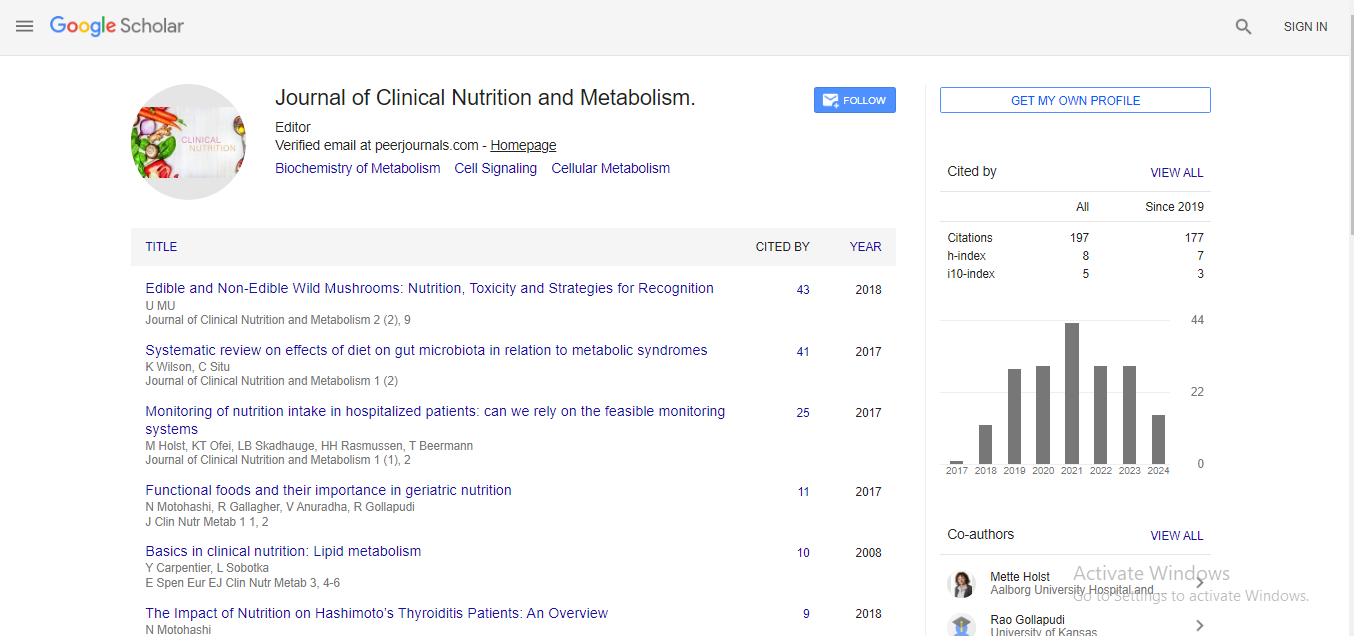Opinion Article, J Clin Nutr Metab Vol: 8 Issue: 4
The Science of Stability: Mechanisms and Significance of Homeostasis
Angela Pauline*
1Department of Plant Biology and Ecology, University of the Basque Country, Spain
*Corresponding Author: Angela Pauline,
Department of Plant Biology and Ecology,
University of the Basque Country, Spain
E-mail: pau.ge@ub.edu.es
Received date: 26 November, 2024, Manuscript No. JCNM-24-154790;
Editor assigned date: 28 November, 2024, PreQC No. JCNM-24-154790 (PQ);
Reviewed date: 12 December, 2024, QC No. JCNM-24-154790;
Revised date: 19 December, 2024, Manuscript No. JCNM-24-154790 (R);
Published date: 27 December, 2024, DOI: 10.35841/JCNM.1000162
Citation: Pauline A (2024) The Science of Stability: Mechanisms and Significance of Homeostasis. J Clin Nutr Metab 8:4.
Keywords: homeostasis
Description
Homeostasis is the biological process by which living organisms maintain a stable internal environment despite changes in external conditions. It is a fundamental principle of physiology that ensures the proper functioning of cells, tissues and organs, ultimately sustaining life. From regulating body temperature and blood pH to balancing glucose levels, homeostasis involves complex mechanisms that operate continuously to preserve equilibrium.
The term homeostasis originates from the Greek words “homeo,” meaning similar and “stasis,” meaning standing still. Coined by physiologist Walter Cannon in the early 20th century, the concept refers to the body’s ability to maintain a stable internal environment within a narrow range of optimal conditions. This stability is vital for the survival of organisms, as physiological processes are highly sensitive to deviations in temperature, pH and other variables.
Homeostasis is not a static state but a dynamic process that involves constant adjustments to internal conditions in response to external fluctuations. The mechanisms of homeostasis operate through feedback systems, which can be categorized as negative feedback and positive feedback. Negative feedback is the most common mechanism in homeostasis, where a deviation from the set point triggers a response that counteracts the change and restores equilibrium. Regulation of body temperature, when the body overheats sweat glands release sweat to cool the skin through evaporation. Conversely, when the body is cold, shivering generates heat to raise body temperature. Positive feedback amplifies changes instead of reversing them, typically occurring in processes that need a definitive endpoint.
When a blood vessel is injured, platelets adhere to the site and release chemicals that attract more platelets, amplifying the clotting process until the injury is sealed. The hypothalamus acts as the body’s thermostat, maintaining an optimal temperature. Mechanisms such as sweating, vasodilation and shivering help regulate temperature in response to environmental changes. The pancreas plays a central role in maintaining blood glucose levels through the release of insulin and glucagon. When blood glucose is high, insulin promotes glucose uptake by cells and storage as glycogen in the liver.
When glucose levels drop, glucagon stimulates glycogen breakdown, releasing glucose into the bloodstream. The buffering action of bicarbonate ions, respiratory control of carbon dioxide levels and renal excretion of hydrogen ions are essential for maintaining this balance. The kidneys regulate fluid and electrolyte balance by filtering blood and adjusting the excretion of water, sodium, potassium and other ions. Anti-Diuretic Hormone (ADH) and aldosterone play important roles in this process.
Homeostasis is essential for survival and health. Disruptions to homeostatic mechanisms can lead to disease and dysfunction. In health optimal functioning enzymes and cellular processes operate best within specific ranges of temperature, pH and ion concentrations. Adaptation to environment homeostasis allows organisms to adapt to changing environments, enhancing survival. In disease, homeostatic Imbalance prolonged disruptions to homeostasis can cause diseases. For instance, diabetes results from impaired glucose regulation due to insulin deficiency or resistance. Stress and aging chronic stress and aging can weaken homeostatic mechanisms, increasing susceptibility to illnesses such as hypertension and osteoporosis.
Homeostasis is constantly challenged by internal and external factors, including environmental Changes. Extreme temperatures, humidity and altitude can disrupt thermoregulation and oxygen levels. Devices such as Continuous Glucose Monitors (CGMs) and wearable temperature sensors enable real-time tracking of homeostatic variables. Medications like insulin, beta-blockers and diuretics target specific aspects of homeostasis to treat conditions such as diabetes, hypertension and heart failure. Personalized approaches based on genetic and metabolic profiling are improving the management of homeostatic imbalances.
Conclusion
Homeostasis is the base of life, enabling organisms to maintain stability and function in a constantly changing environment. Its mechanisms, driven by feedback systems, ensure that internal conditions remain within optimal ranges, supporting health and adaptation. However, challenges such as disease, environmental stressors and lifestyle factors can disrupt this balance, highlighting the importance of maintaining healthy habits and utilizing advancements in medical science. As our understanding of homeostasis deepens, new opportunities arise to enhance health and treat diseases, reinforcing its central role in the science of life.
 Spanish
Spanish  Chinese
Chinese  Russian
Russian  German
German  French
French  Japanese
Japanese  Portuguese
Portuguese  Hindi
Hindi 